This video will be available on Thursday, April 3, 2025.
Spooner, Wisconsin
04/03/25 | 26m 48s | Rating: NR
Spooner, Wisconsin is not only up north — it’s up near the top of John and Emmy’s “love it here” list! It could be Spooner’s fascinating railroad past, or the terrific outdoor recreation here now. It could be because John experienced his first rodeo in Spooner. But it’s probably top of the list because of all the Mayana Chocolate they ate!
Copy and Paste the Following Code to Embed this Video:
Transcript for Spooner, Wisconsin
– John McGivern: I’m in a small town in Wisconsin that calls itself the “Crossroads of the North.”
– Announcer: We thank the underwriters of John McGivern’s Main Streets because without them, we couldn’t make this show.
– Visit Oconomowoc.
Lakes, festivals, shopping, dining.
The heart of Lake Country.
– Your community’s best selfie spot is Your-Type!
– There’s always something shining bright in Sun Prairie, Wisconsin.
– My father taught me that to make great bakery, you have to do it the right way.
O&H Danish Bakery, where kringle traditions begin.
– Heiser Automotive is honored to help John McGivern and his team arrive safely to many Main Streets.
We are committed to remaining true to the Heiser way: Do what’s right for our customers, our employees, and the communities we serve.
We are happy to help.
– Yes, Greendale is beautiful on the outside.
But it’s what’s inside that counts.
Who doesn’t love opening a door to great food?
Whether you want to go casual… upscale… or maybe you want to try something brand-new?
Come on in!
You just gotta see Greendale.
– Announcer: Horicon Bank: The Natural Choice, West Bend Insurance Company: The Silver Lining, the Friends of Main Streets, and the Friends of PBS Wisconsin.
Thanks, underwriters.
– ‘Cause these are our Main Streets Somethin’ ’bout a hometown speaks to me There’s nowhere else I’d rather be The heart and soul of community’s right here On these Main Streets – I am in Spooner, Wisconsin, which is a community of about 2,600 people in Washburn County.
The city is called “Crossroads of the North,” and it’s because it’s where U.S.
Highways 53 and 63 and State Highways 70 and 253 all converge.
Now, there’s always been a debate about what qualifies as “up north” in Wisconsin.
I’m gonna go out on a limb and I’m gonna tell you that Spooner is up north Wisconsin.
Emmy, I’m presuming that the history of Spooner has got something to do with the railroad.
– Emmy Fink: Something to do with the railroad?
It’s got everything to do with the railroad.
We’re going back to the late 1800s, because that’s when the North Wisconsin Railway was built, and it was built to help with the logging and mining industries.
So, this Spooner, as we know it, was just originally a rail station.
And get this, it was called Chicago Junction.
– Chicago Junction?
– Emmy: Right?
– Chicago is far from here.
– Emmy: Weird!
So, the railway had tried to build up a community in a town just north of here called Chandler.
But then they discovered high levels of lime in the water, and that lime was actually wrecking the train engines.
So, things did not work up there.
– So everything moved here.
– Emmy: In a matter of time, it was a bustling railroad town, more than 40 trains back and forth every day.
– You don’t see many trains today.
– No, the last train left the station in 1961.
But if you want a taste of the past, this is where you come, to the Railroad Memories Museum.
There’s so much history in there.
You can actually take a passenger train from Trego to Spooner, and it serves pizza.
– It’s so good.
And Spooner has become this vacation destination because people want to get outside and experience the Great Northwoods.
– You sold me.
– And we’re gonna be outside a lot because it’s the great outdoors.
– Yes!
– John: This is exciting.
This is Tim Belter.
– How are you, sir?
– Just fine.
– He is the president of the Railroad Memories Museum.
What train are we on right now?
– This is the Wisconsin Great Northern.
It’s an excursion train.
It’s owned by Greg Vreeland, good friend of mine.
And he’s a good friend of the museum.
And he’s got a dinner train.
He’s got a pizza train, which is very popular.
You know, before we took off, there was a pizza train that came in, and I was talking to little kids, and they were all giggling and so happy to take a train ride.
– John: Sure.
– Tim: And that’s great.
Spooner was built on what they call the Omaha X.
Just south of Spooner, the tracks split to the west.
They go to Minneapolis/St.
Paul, and then they used to go all the way to Chicago, down through Milwaukee.
– John: Yeah.
– Tim: Yeah, it was great.
I mean, out of Spooner, you could go anyplace.
– John: Yeah, was all of that stuff in the museum donated?
– Tim: A big share of that collection, I would say probably 70%, 80% of that collection, was in a bar on Main Street in Spooner.
It was called Mike’s Railroad Memories Bar.
– John: So, it was like a museum, but with beer.
– Tim: Exactly.
– Are people like, “Can we have a beer here”?
– Tim: Yeah, if you bought a round, they’d blow the whistle.
– John: So good!
– Tim: Yeah, ring the bell.
Yeah, and we still have the whistle, and we still got the bell.
– But the beer ain’t there.
– The beer’s not there, no.
– John: If there were, like, three or four things that people have to see in your museum, what would those be?
– The main room that we have is we have a diorama which shows what the Spooner Yards looked like during the heyday.
We show you what’s left in Spooner.
We have a roundhouse that we have been working on restoring.
The turntable is still there.
It’s a very interesting museum.
It’s filled with memorabilia from all different eras of railroad.
If it wasn’t for the railroad coming to Spooner, I literally wouldn’t exist.
My grandfather was in Bismarck, North Dakota, and he was transferred by the railroad to Spooner.
– It’d be a whole different world.
– Yeah.
– Wouldn’t it?
– So, the rail is important.
Dad was a conductor.
– John: Did you go to work with your dad?
– Tim: Yeah.
Actually, I took the last passenger train out of Spooner with my dad, and that was 1961.
And he told me, he said, “Hey,” he said, “Yeah,” he said, “You’ll remember this someday.”
– John: Wow.
– It was a sad day because that was the end of an era.
– John: Yeah.
Yeah, there’s something, like, sort of, like, romantic and mystical about it all.
I mean, there really is train travel.
– Tim: Yeah, this is the first time– I was just thinking about it.
It’s the first time I’ve been on these tracks since the ’50s, late ’50s.
– John: Why?
– Tim: Because there was no passenger service, and I didn’t work on the railroads.
And I haven’t taken one of Greg’s train rides.
– John: And it’s because we came that you’re back on here since the ’50s.
– So you brought me back to the ’50s.
– John: Look at, welcome home.
– Yeah, yeah, yeah.
– John: That’s really great.
– No, we did not just fly to Washington, D.C.
This is a replica of the Tomb of the Unknown Soldier, and it actually wasn’t even created here in Spooner.
So, the story goes that there was a Memorial Day celebration down in DeForest, Wisconsin, back in 2016, and they created this replica so that Wisconsinites would have a chance to see what the tomb looks like up close in case they can’t get to Washington, D.C.
But after that ceremony, they’re like, “Well, now where is its forever home gonna be?”
And Spooner said, “Pick us, “because the perfect spot is right here at the Veterans Memorial Waterfront Park.”
[upbeat music] – John: I’m thrilled to be here.
It’s Mayana Chocolate.
Mayana, can we talk about the name?
– Daniel Herskovic: Sure.
– Where did it come from?
– I saw the mayana plant.
It doesn’t have anything to do with chocolate.
– John: No.
– Daniel: But it just, it works.
– Originally from where?
– Esteban Rivera: From Chile, the other side of the planet.
– From Santiago?
– From Santiago.
– Hey, there you go!
– You are?
– I am.
– And did you know of Spooner, Wisconsin, when you lived in Santiago?
– Esteban: No idea.
I had no idea about Wisconsin.
– John: No.
– But Mayana captivated me.
And they have what it takes to go to the next level.
– We are known nationwide for our take on candy bars.
We use ethically-sourced dark chocolate from Ecuador.
They are very pure, natural ingredients, and we cook them in artisan methods, and we create candy bars doing that.
– I don’t mind being put to work if, in the end, there’s a treat.
– Any good?
– I’d like to try the big bar.
– Daniel: Okay, nice, we’ll hook you up.
Tiffany is in charge of making all the things you see there.
– So, do you have a cot here?
[Tiffany laughing] – Daniel: This is caramel.
– John: It’s caramel.
– Daniel: Yes, we use 22 pounds of butter in every batch, three gallons of cream.
So, sugar, fat, salt– it’s all in there.
– It’s all good.
– Yes, it is.
So, we make our candy on these big granite tables.
– John: It’s a big candy bar.
– This will make about almost 2,000 of our mini candy bars.
– But we’re all done in here.
We’re gonna head over to packaging and teach you how to fill our boxes.
– She’s kind of bossy.
– Right.
She runs the show.
– And is this on a slow roll right now?
– This is as slow as it will go.
– Yeah, it’s not like I Love Lucy.
– It’s not?
Don’t lie to me.
Come on, really?
We’re gonna be okay?
[all laughing] Wait, why isn’t it… Oh, here we go.
Do you have one of these a day?
– No.
– You don’t?
– So, can I have yours?
– Oh, go ahead!
[both laughing] This way.
Oh, that– Oh, sure.
This one first?
This one?
– Mm-hmm.
– This one?
– And then… – There you go.
Looks good, yeah.
– And then?
– You have to squish ’em down so you close the lid.
– Not bad.
– Good job.
– It’s the Space Bar Mini.
We’ll see you later, Pat.
I have a lot of favorites.
The Pecan Paradise Bar, Pumpkin Spice Mini Bar, the Mayan Spice Mini Bar.
– Daniel: From the moment we got here, we received a lot of support from Spooner.
– John: Space Bar Mini, the Monkey Bar Mini, the Cloud Nine.
– You get that warm feeling of “I’m in a place that feels like home.”
– The Coconut Bar Mini, Pride Mini Bar.
– It’s not just me involved.
– John: Peppermint Mini, Kitchen Sink.
– Daniel: We have an amazing team.
– My favorites: Ta-da!
– Daniel: They’re the reason why we have such amazing chocolate every day.
– This is the Spooner Bake Shoppe.
It’s been here since 1952.
Doughnuts are a dollar.
Look, I spent six bucks this morning.
My father always taught me to finish my meal.
I plan to.
One of the reasons people come to Washburn County is to get out on the water for fishing and boating and swimming and tubing.
This is Spooner Lake.
It’s one of the largest lakes in the county.
Do you have any idea how many lakes there are in Washburn County?
[playful music] – Across the 850 square miles that make up Washburn County, there are nearly 1,000 lakes.
That’s right, and if you don’t believe me, well, you can get yourself a map and count ’em.
We’ve got Adventure, Alder, Anah Springs, Baker, Balsam…
I am so excited because Jack’s Canoe and Kayak rentals, they’re gonna let me go out on the Namekagon, and I love a good adventure.
Here’s the details.
It’s 100 miles long, and some actually call it Wisconsin’s Moving National Park, because a lot of the river actually flows through undeveloped forests.
So, if you’re a kayaker or tubing or a canoer, you have found your next adventure.
This might be one of my favorite segments ever!
My happy place!
[gentle acoustic music] – John: We’re at the Wisconsin Canoe Heritage Museum.
What can people expect to see here?
– Jed Malischke: Well, we’ve got canoes from the turn of the century all the way through modern canoes.
There isn’t another museum in the United States devoted solely to canoes.
The museum was started with the collection of Jill and Jeff Dean.
That was about 25 canoes.
We’re up to about 60 or more now.
– John: They’ve been around longer than we believe, though, don’t you think?
– Oh, and they’ve been around thousands of years.
I mean, originally, they were used for traveling, hunting by the Native Americans.
– The oldest one in this building is how old?
– We have one that’s from the 1870s.
– Okay.
– Jed: But we do also have a dugout canoe that we don’t know.
– John: Let’s talk about this one.
Who’s sitting there?
– Jed: The guy that pays the big bucks.
They were built specifically for use on the Brule River, sometimes called the Presidents’ River, ’cause there were a number of presidents vacationed on the river.
You got the big, fancy seat, and the guide would pole the canoe, and he would take you around the river while you fly-fished.
These two together are one of my highlights.
We put them together to show how similar they are.
The construction, you’ve got the ribs going this way.
You’ve got planking going this way.
– John: Right.
– And then you cover it with something.
This is the same thing.
It’s just covered with canvas.
Before that, you had to have somebody that knew how to make you a birchbark canoe.
That was not easy.
We maintain a shop that people can come and use on their own for their own personal projects.
– Jamie Dunn: That’s the fun thing about doing restorations is seeing how they were doing this a long time ago, and how much nicer the wood was back then.
It’s kind of becoming a lost art, and the materials are becoming lost, also.
When they’re in here building, it’s their canoe.
I show ’em how to do it and help them through the process, but they have to do the work.
– Jed: Joe’s got a canoe over here that he’s staining right now.
– Joe Breitenstein: It was made in 1896.
– John: Oh, wow!
– Joe: So, it’s fascinating to me that something can last 120 years and every once in a while need a tune-up.
– And when will you have to do this again?
– Another 120 years.
– Is that right?
– Is that really?
– It won’t be me.
– So, this was nothing four months ago.
– Had you done it before?
– Bill Matthias: Never, uh-uh.
I’m just a retired school administrator.
Never thought in my wildest dreams I’d be building a canoe.
My son built one this winter.
He liked it so much, I decided to build one myself.
His is a little smaller with just one seat.
– But you wanted to use this for dating or something that you needed two seats?
– You’ll take this guy out?
– Joe: Yes.
I really like to paddle a lot of quiet Wisconsin lakes, paddle around and see what’s out there and maybe take the occasional nap.
– Is that right?
You still have some time to put this out, don’t you?
– Oh, yeah, tonight, I think.
– You’re taking it out… – Taking it out tonight.
– Should we help?
– Yeah!
– John: It’s really beautiful.
I didn’t build it.
– Bill did.
[both laughing] – Okay, Emmy told me to meet her on the trail by the stop sign.
I believe this is the trail.
I believe that is the stop sign.
And I think this is Emmy.
– Hey, howdy, partner!
– What are you doing?
– Oh, I’m riding the trail, silly!
– Do you have room for me?
– Of course.
– Do you have a helmet for me?
– And a helmet.
– Okay, here we go.
– It won’t even mess up his hair.
– Are you ready?
– Get in here.
– Do you know what you’re doing?
– No!
– Okay, are you set?
Is there– Okay, very good.
I can’t see a thing.
There we go, all set?
– All right.
– Let’s go.
– Here we go.
[engine roaring] Come on!
I won’t crash you into them, I promise.
There are over a hundred miles of trails here in Washburn County.
– John: Hundred miles.
You’ve been on all of ’em?
– Emmy: Who needs a car?
– John: How do you know where you’re going?
– Emmy: Well, you have the map, right?
‘Cause I do not have the map.
– John: I don’t have the map, but I know the way to town.
– Emmy: Okay, I wanna show you something.
So, this is where the ride stops.
– John: You’re good at that.
– You wanna do all 100 miles?
– Well, it’s up to you.
– Emmy: So, the reason I brought you here.
So, this is Railroad Park, and this whole park is an ongoing project to preserve the historic Spooner Roundhouse and Turntable.
And then they’re expanding this into a beautiful 13-acre park.
It’s gonna have everything.
So, we’re talking pickleball, volleyball, a kids’ playground, a band shell.
I mean, I just love when a community comes together for the greater good.
– John: I do, too.
And when we get back in this thing, you’re driving.
I’m telling you, this is what you’re meant to do.
– Emmy: All right.
[both laughing] – John: We’re at the Governor Tommy Thompson Fish Hatchery.
We are here to talk about these guys, aren’t we?
– Jared Boucher: Yep.
On average, we raise about 300,000 walleyes, up to about 6 or 7 inches every year.
And we raise between 20,000 and 40,000 muskies a year.
And they’re about 12 inches long in the fall.
A lot of the lakes we stock, we’re trying to reintroduce kind of a natural reproducing system.
And then some systems just won’t take at all, and we just wanna maintain them.
– John: So, are walleye and muskie, are they all over the country?
Is Wisconsin the best place to do it?
– Well, of course Wisconsin is the best place to do it.
But yes, others– – John: That’s just your opinion.
– A lot of other states do have walleyes.
– John: They do?
– Jared: Other states have muskies as well.
– Ruth King: That was done to show the seasonal progression of what actually happens.
– John: Oh, great.
– Ruth: I tried to depict the different habitats that the different fish use.
– Do you still do artwork?
– I do, although on a limited basis.
– This scale?
– No!
Never again will I do another mural.
– Why?
– That thing took five years.
– John: Now what do you do here?
– Ruth: I act as a naturalist and a tour guide, and it’s a very, very cool blend of getting to share with them cool things that are going on here and educating people a little bit about good practices for water quality.
– So, spawning is the actual act of fertilizing the eggs?
– Jared: Yes.
– So, how do you get the eggs?
– There’s my fish.
– Roughly the size of a muskie.
– It sure is.
– Jared: You’re gonna line that fish up and squeeze its belly over the pan.
– I’m squeezing the belly.
Oh!
The eggs are now in the pan.
– Jared: And that’s how you spawn a fish.
– John: Now you call the guy over and he fertilizes these.
– He will fertilize the eggs.
– You move through summer, and walleye are gonna hatch in those rocks.
We call these little guys fingerlings.
They’re about 2.5 inches.
– Okay.
– This is probably gonna be mid-June through July.
– A jar this size with about that many eggs has roughly 300,000 walleye eggs.
– John: And how many of those will turn into fish?
Will they all?
– Most of them, yep.
– Most of them will?
– Most of them will, yeah.
We’ll have a few hundred jars going along this whole area.
– John: Yeah.
– Jared: This truck alone can haul about 12,000 walleyes at a time.
We can hook a pipe right to the back of the truck and pump ’em right into the lake.
– Ruth: Everybody loves to go stock fish.
– John: Do they?
– Ruth: Well, of course you do!
Things that they worked at very hard all throughout the spring and summer.
– John: It’s the payoff.
– Ruth: That’s the payoff, exactly.
Well, the ultimate payoff is when the kid catches that legal walleye, right?
You know, or they have their first muskie.
That’s the ultimate payoff.
But in the meantime, that’s pretty satisfying.
– When you’re exploring all the great shops downtown, you want to remember to just keep looking up, because there are 17 businesses on Walnut Street that still have their original tin ceilings.
They are beautiful!
– Spooner, Wisconsin, has some of the wildest business names I’ve ever heard of doing this show.
Here, take a listen.
Gypsy & The Frog.
Purple Pelican Gallery.
We have one called The Copper Horse.
There’s Alley Cats Coffee, and I’m standing in front of The Wobblin’ Duck Saloon.
There’s kind of an animal theme, but it’s kind of weird animals.
[duck quacking] Hmm.
– This cute little place on the corner?
I mean, it’s one of a kind.
How many businesses can use the motto “Been on the scene since 1915?”
The Spooner Mercantile can.
Not only have they been family-owned the whole time, they have everything.
They have clothes, a great footwear section.
You can even get your tux here, and they’ll handle your dry cleaning.
They’ll even hem your pants while you wait.
I mean, how many places do that?
The customer service here, impressive.
– In all of the United States, there are only two Spooners.
Do you know how this Spooner got its name?
[playful music] – Spooner, Wisconsin, got its name from a Wisconsin senator named Mr. John Spooner.
And before he was in the Senate, he was a lawyer practicing railroad law.
Everything comes back to the railroad here.
[upbeat music] – John: We’re at Round Man Brewing Company.
It’s a great room.
– Sue Churchill: Thank you very much.
– This brewing company, when did this happen?
– Sue: Six years ago.
– John: So, did you have a brewery before this?
– Sue: No, we’re from Rochester.
I retired from the Mayo Clinic, and we moved to the cabin here in Spooner.
– You did?
– And our daughter and I opened the coffee shop next door, The Dock Coffee, about 10 years ago now.
– John: Yeah.
– Sue: And it must have been over a beer or something that this idea came up.
And here we are.
– Does the whole family work here?
– Yes.
– John: They do?
– Sue: We have three kids.
All three of them and all three of their spouses work with us.
Six months ago, we opened another restaurant, Strongman Smokehouse.
– Sue, what are you doing?
[both laughing] – Spencer Churchill: The intention, really, the big driver for Strongman, our other operation, was to bolster our production abilities.
For this operation, we were, “Hey, we wanna open a restaurant and have a brewery.”
There, we wanted to open a brewery and have a restaurant.
– Good to see you.
You’re the brewmaster?
– I am.
– Yeah.
How many different beers have you created here?
– Spencer: That’s a number I don’t know, either.
– I don’t keep track.
– 25, 30 maybe?
– Is it that many?
– There’s a bunch.
– Oh, yeah?
– Spencer: We have 16 products online right now.
Then here our menu consists of slightly elevated pub fare.
We want things that people are comfortable with, that are approachable, but we also wanna introduce a cuisine that’s not really seen here much.
So, we put our own flair on, you know, home favorites.
I could never see myself going out to eat and saying, “I’ll have the meat loaf, please.”
But here, without question.
– John: You’ll get the meat loaf.
– Get the meat loaf.
Get the meat loaf.
– So, whose recipe is this?
– Spencer: That’s my baby.
– John: It’s your baby?
– Spencer: Yeah.
– Meat loaf really goes right back to being at home at 5 o’clock when you were a kid.
– Absolutely.
– John: Something that was always a treat.
– There’s something about that comfort food that people really come back for.
– This is called a flight.
– It is.
– John: Do they finish this usually?
– Spencer: I hope so.
– John: You do?
– Yeah, if they don’t, I do.
– Well… – Wait, no.
– That’s not gonna make television.
– No!
– Six years later, are you surprised at the success of this?
– Yeah, we’re really pleased.
It’s been a fun journey, yeah.
– What’s next?
[all laughing] – Sue: A nap is next, yeah.
[upbeat music] – John: As a kid growing up in Milwaukee, I loved Dale Evans and Roy Rogers and Trigger.
But guess what I’ve never been to until today?
The rodeo!
So, you guys know rodeo.
And I’m only guessing because of– come on.
This has been here for 70 years.
– Bob LeMoine: Yes, it has.
My dad was one of the charter members to start the rodeo.
– John: Do you ride?
– Bob: Yes, I do.
– John: You do?
And do you have a horse that’s yours?
– Bob: Oh, yes, sure.
– John: Okay.
Why’d you look at me like that?
“Of course, well, what do you mean?”
– You asked me that question?
– “Of course I have a horse!”
Let’s talk about what happens at a rodeo.
– Nancy Olson: The events are bareback, saddle bronc, calf roping, mutton busting.
That’s my event.
– Are those kids?
– Yes.
– So, you put kids on a… – Nancy: On sheep.
– John: On sheep?
– Nancy: Mm-hmm.
– John: How old are these kids?
– Nancy: Five to eight.
– And do some get up there and say, “I don’t wanna do it?”
– Most of them, Mom and Dad can talk into it.
– They can?
– Yeah.
– Get on the sheep!
[laughter] – Okay, I have to be honest.
I was talking to my producer and our cameraman, who was here shooting the rodeo, and they said the gates opened, and the kids fell.
[laughing] – Nancy: Well, most of ’em do, but we’ve had kids that have gone all the way almost to the other side of the arena.
– John: If every one of these bleachers was full, how many people would be here?
– Bob: I think there’s 5,500 or 5,600 people we can sit in here.
– John: So obviously not just from Spooner.
– Bob: Oh, no, no.
– They come from everywhere.
– John: I bet they do.
– Nancy: Yeah.
– We sell tickets to most every state.
We’ve got food.
We’ve got a beer garden over here.
So, yeah, you can go and eat and have a beer.
And we always bring in some top entertainment here.
– John: And this has gotta be an incredibly important event for this community.
– Professional rodeo is growing, and it’s getting like a lot of other professional sports, where it has its own following.
So people come and they watch, they know the contestants.
The animals are contestants also.
– John: Oh, they are?
– So these animals, the saddle broncs, the bareback horses, the bulls, they’re all vying to make their way to the NFR in December also.
– John: And these riders know those animals, yes?
– Bob: Oh, they know these animals.
– John: And how do they– They don’t choose who they’re gonna be on, right?
– No, they get drawn.
That’s all in a draw.
– John: And they want something that’s gonna buck really well?
– Bob: Oh, yes, yes, they do.
– John: Why is that?
– Bob: That’s how you score points.
The more points you score, the more money you make, the more money you make, that’s how you make it to the National Finals Rodeo.
– What makes the bulls so mad?
– Bob: It’s in their nature to buck.
They don’t want something on their back.
That’s the same with the horses, you know.
I mean, they’re bred for that reason.
– Do you have clowns here?
Do you have rodeo clowns?
– Oh, yes, oh, yeah.
You have to have clowns just in case somebody gets hung up on a bull or something like that.
So, the clowns are there to distract the bull away from the rider.
– So, I’ve never been to a rodeo.
So I, as a virgin– – John!
– Don’t look at me like that– Again!
What’s with the looks?
[all laughing] Some people in the crowds are completely involved.
– Bob: If you’re anywhere around here, you’ll hear the crowds roar.
[laughing] [upbeat music] – John: Emmy, I think Spooner is the greatest up north Wisconsin town, and there was so much to do.
– Were you surprised?
– I was surprised.
And I could ride this thing forever.
So, what do you say we take it back to Milwaukee?
– We’ll get there much quicker the way she drives.
– The highway or trails?
[engine roaring] – There’s nowhere else I’d rather be The heart and soul of community’s right here – Am I going to heaven?
– Lois: We think so, you’re a good guy.
– Woman: You’re already in heaven.
You’re in Spooner.
– She’s adorable.
– They built the North Wisconsin Whale– Railway right here.
[both laughing] – Lois “Whale way?”
– John: “Whale way?”
– Man: Jump up and down.
– It was energy, but I’ve lost it.
[Emmy laughing] – Man: He comes back.
– There’s #### here!
Excuse me, sorry.
– Announcer: We thank the underwriters of John McGivern’s Main Streets because without them, we couldn’t make this show.
– Visit Oconomowoc.
Lakes, festivals, shopping, dining.
The heart of Lake Country.
– Your community’s best selfie spot is Your-Type!
– There’s always something shining bright in Sun Prairie, Wisconsin.
– My father taught me that to make great bakery, you have to do it the right way.
O&H Danish Bakery, where kringle traditions begin.
– Heiser Automotive is honored to help John McGivern and his team arrive safely to many Main Streets.
We are committed to remaining true to the Heiser way: Do what’s right for our customers, our employees, and the communities we serve.
We are happy to help.
– Yes, Greendale is beautiful on the outside.
But it’s what’s inside that counts.
Who doesn’t love opening a door to great food?
Whether you want to go casual… upscale… or maybe you want to try something brand-new?
Come on in!
You just gotta see Greendale.
– Announcer: Horicon Bank: The Natural Choice, West Bend Insurance Company: The Silver Lining, the Friends of Main Streets, and the Friends of PBS Wisconsin.
Thanks, underwriters.
– Ready?
– Bye-bye, Spooner!
– Bye-bye, Spooner!
Search Episodes

Donate to sign up. Activate and sign in to Passport. It's that easy to help PBS Wisconsin serve your community through media that educates, inspires, and entertains.
Make your membership gift today
Only for new users: Activate Passport using your code or email address
Already a member?
Look up my account
Need some help? Go to FAQ or visit PBS Passport Help
Need help accessing PBS Wisconsin anywhere?
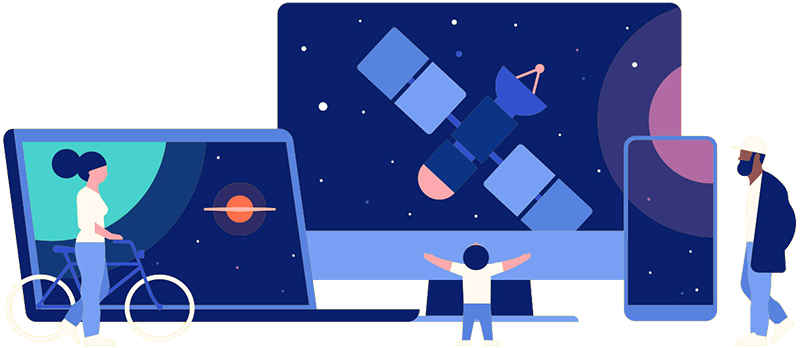
Online Access | Platform & Device Access | Cable or Satellite Access | Over-The-Air Access
Visit Access Guide
Need help accessing PBS Wisconsin anywhere?

Visit Our
Live TV Access Guide
Online AccessPlatform & Device Access
Cable or Satellite Access
Over-The-Air Access
Visit Access Guide
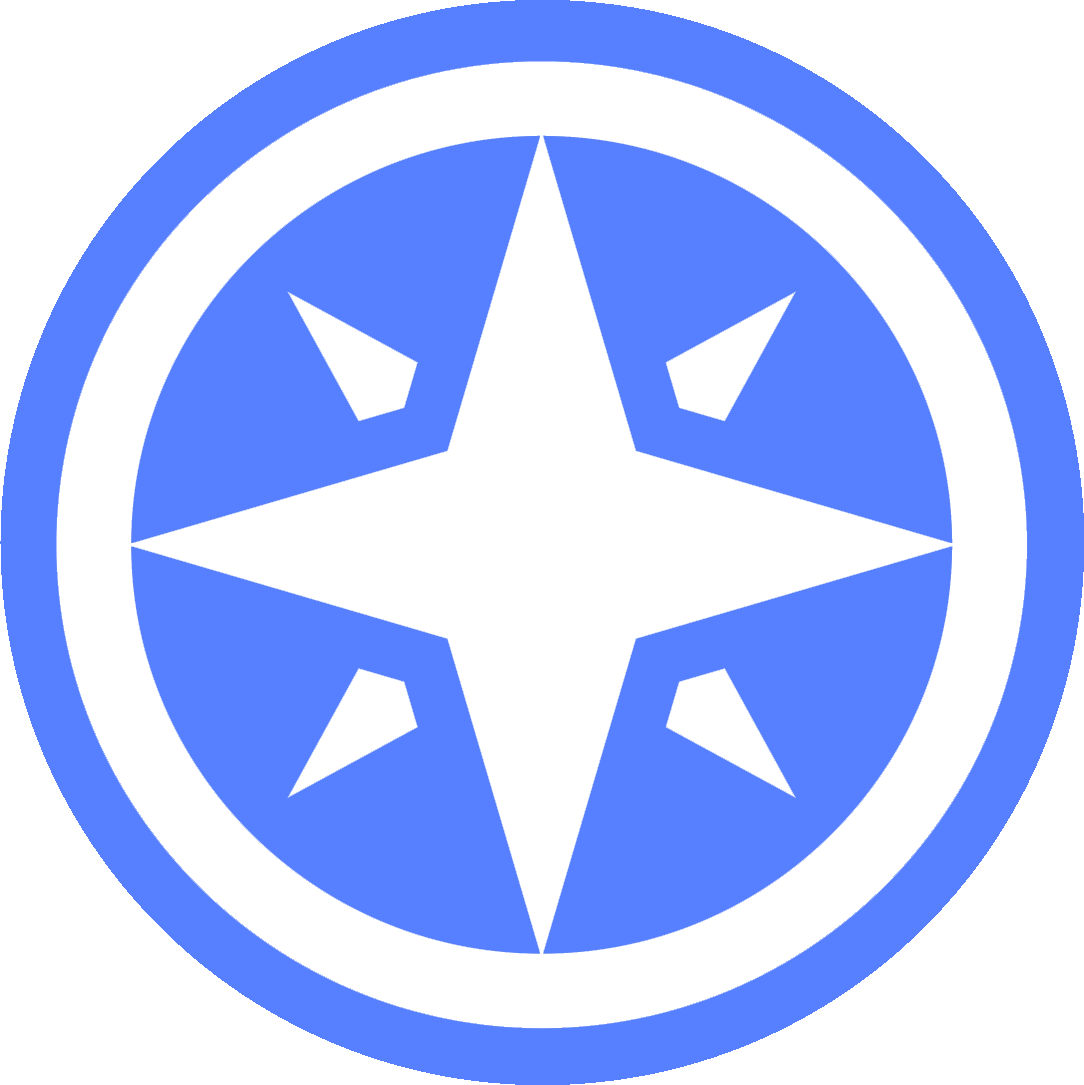 Passport
Passport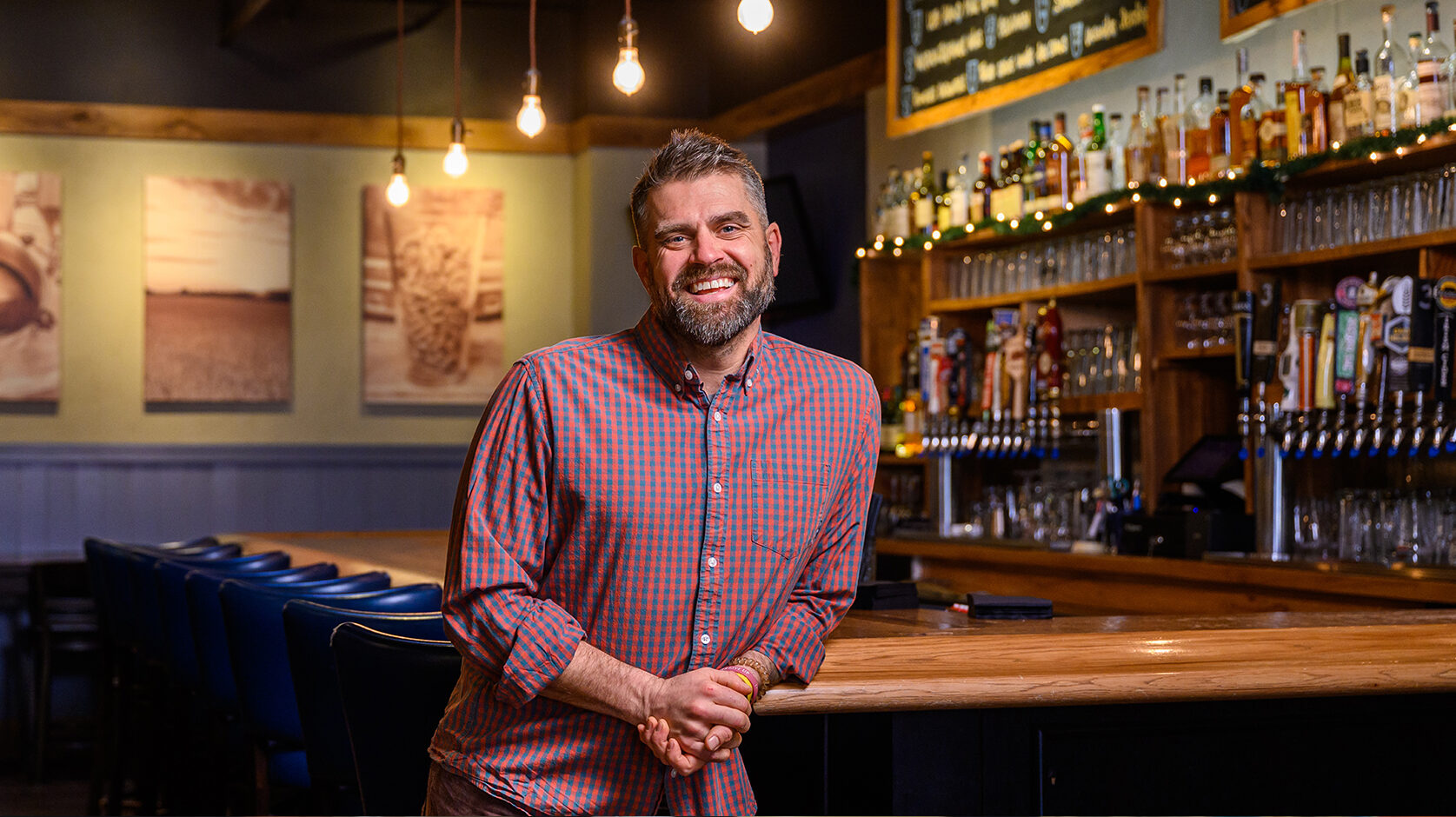
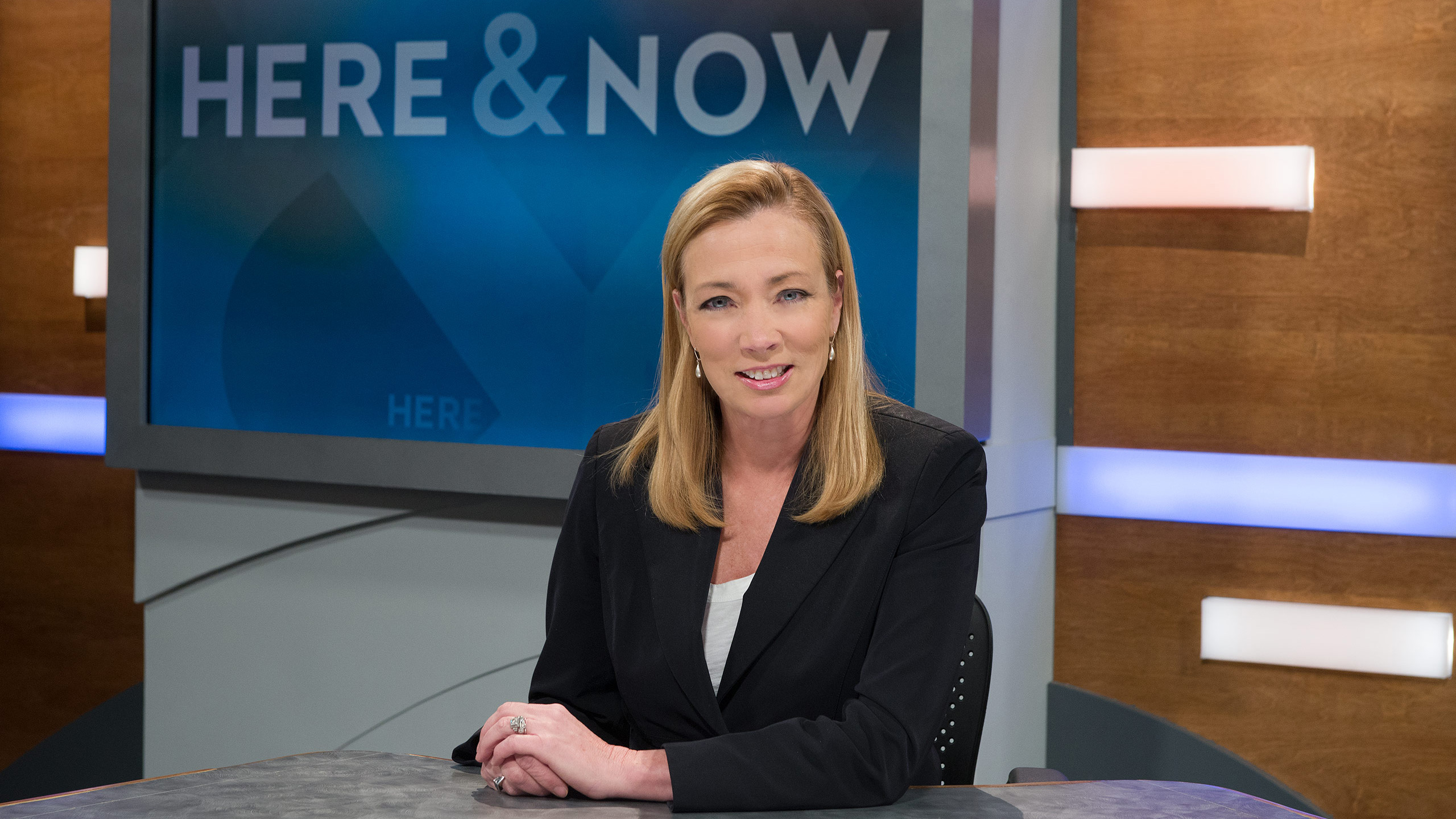
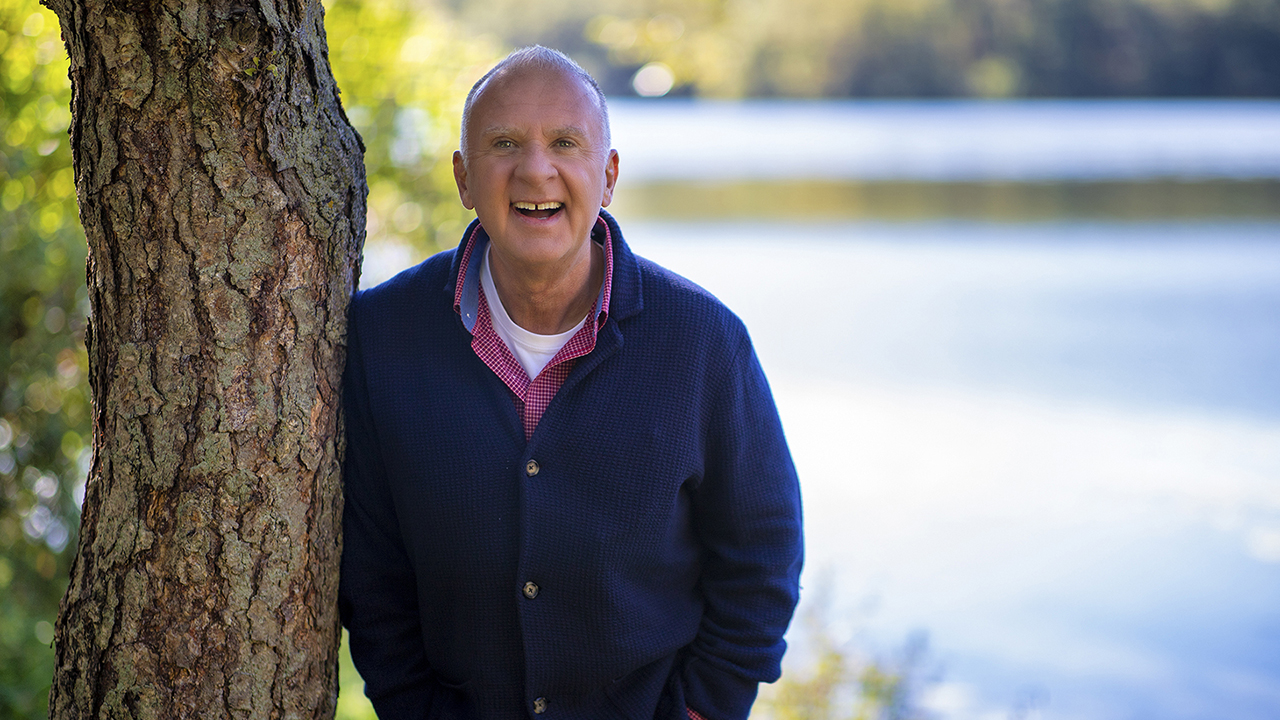

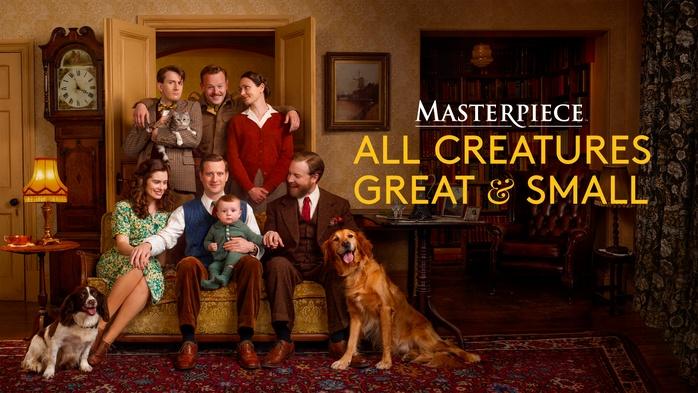


Follow Us